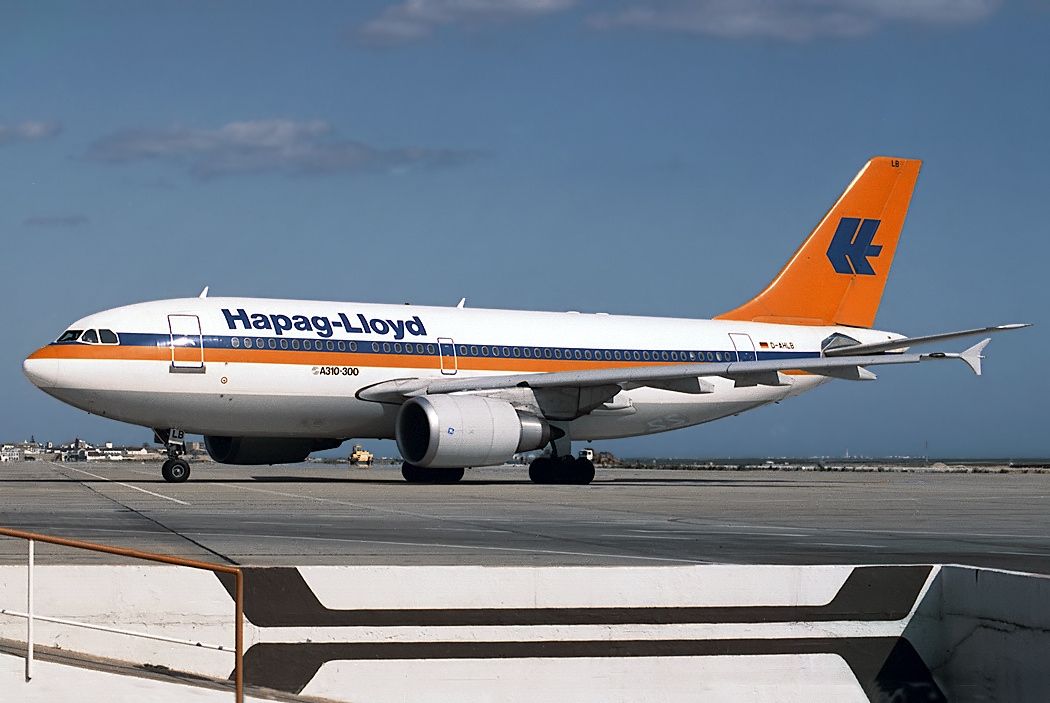Hapag-Lloyd Flight 3378 was the Airbus A310's 6th recorded hull loss. On the 12th July 2000, the aircraft registered as D-AHLB crashed near Vienna International Airport on its journey from Chania, Greece to Hannover, Germany. All 143 passengers and 8 crew onboard the aircraft survived this accident, although some had to receive medical treatment.
Hapag-Lloyd Flug
Hapag-Lloyd Flug was an airline that operated predominantly between German cities and leisure towns across Europe. It operated a variety of both Airbus and Boeing aircraft on its routes, and based its aircraft in the cities of Frankfurt, Hannover, and Düsseldorf. However, in 2007, it merged with Hapag-Lloyd Express and became TUI Fly Deutschland, the German wing of the TUI Group.
The flight
The flight on July 12th, 2000, was operated by Captain Wolfgang Arminger. The Airbus A310 departed Chania Airport at 10:59 local time. However, the pilots found that it was impossible to retract the landing gear and that the red "gear unsafe" lamp and the yellow "gear door open" lamp were both turned on.
The flight crew decided to continue to fly towards Germany but thought that the destination of Munich (MUC) would be a better option based on the Flight Management System (FMS). They also contacted the airline to confirm that an Airbus A310 would be available at Munich Airport to take the passengers to Hannover.
However, soon after, the crew realized that the fuel burn was much quicker than expected. This was because the extended landing gear had increased drag, meaning that more fuel was needed to fly. Therefore, Munich Airport was no longer possible. At 12:00 local time, the Captain instead decided to divert to Vienna (VIE).
At 12:34 local time, the FMS predicted that the remaining fuel upon arrival at Vienna Airport would fall to just 1.9 tonnes. Standard operating procedures would have been for the captain to divert to Zagreb, which was only 10 minutes away. However, the Captain refused to divert to Zagreb, opting to continue onwards to Vienna. Only at 12:53 did the Captain inform air traffic control that the aircraft was running out of fuel, as he requested to land in Graz if a direct approach to Vienna was unavailable.
At 13:07 local time, the Captain finally decided to request an emergency landing at Vienna due to the lack of fuel, but Captain Arminger still insisted that it was unnecessary to request emergency services to attend. Ultimately, the aircraft did run out of fuel - both engines flamed out 12 nautical miles from the runway. The first officer was able to restart them one more time for a few more minutes of thrust.
The plane semi-glided towards the runway, but lacked the necessary control for a stable approach. The left wing tip hit the grassy surface about 660 meters short of the runway, the landing gear collapsed and the aircraft turned 90 degrees to the left. It finally came to a rest at the end of the runway. Despite appearing relatively unscathed, the plane was written off due to severe damage to the underside of the fuselage. Passengers were uninjured by the crash, but 26 received minor injuries from using the escape slides.
Investigation
An investigation by both the German and Austrian authorities found that the issue with the unretractable landing gear was due to an oversight during maintenance. A lock nut had been inadequately secured, allowing a screw to gradually creep out of position, thereby preventing full retraction.
However, the failure of the landing gear was a minor issue that should not have resulted in the crash landing of the airplane. The investigation identified a number of key reasons that this relatively minor malfunction was not adequately dealt with, including:
- Failure to comply with company regulations regarding fuel reserves
- Over-reliance on the FMS, which was inaccurately predicting fuel reserves given the gear-down situation
- Single-mindedness on the captain's part regarding the need to reach Germany, when Zagreb was a far better choice for a diversion airport
- Lacking documentation from Airbus regarding limitations of the FMS on fuel management in unusual situations
- Inadequate documentation from the airline regarding landing gear issues and fuel requirements
In all, 14 recommendations were made for improvements in procedures, systems, and documentation to prevent such an issue from occurring in the future. Captain Arminger voluntarily left the airline six months after the crash, but was later convicted of 'dangerous interference in air traffic', mainly due to his decision not to divert to Zagreb.

